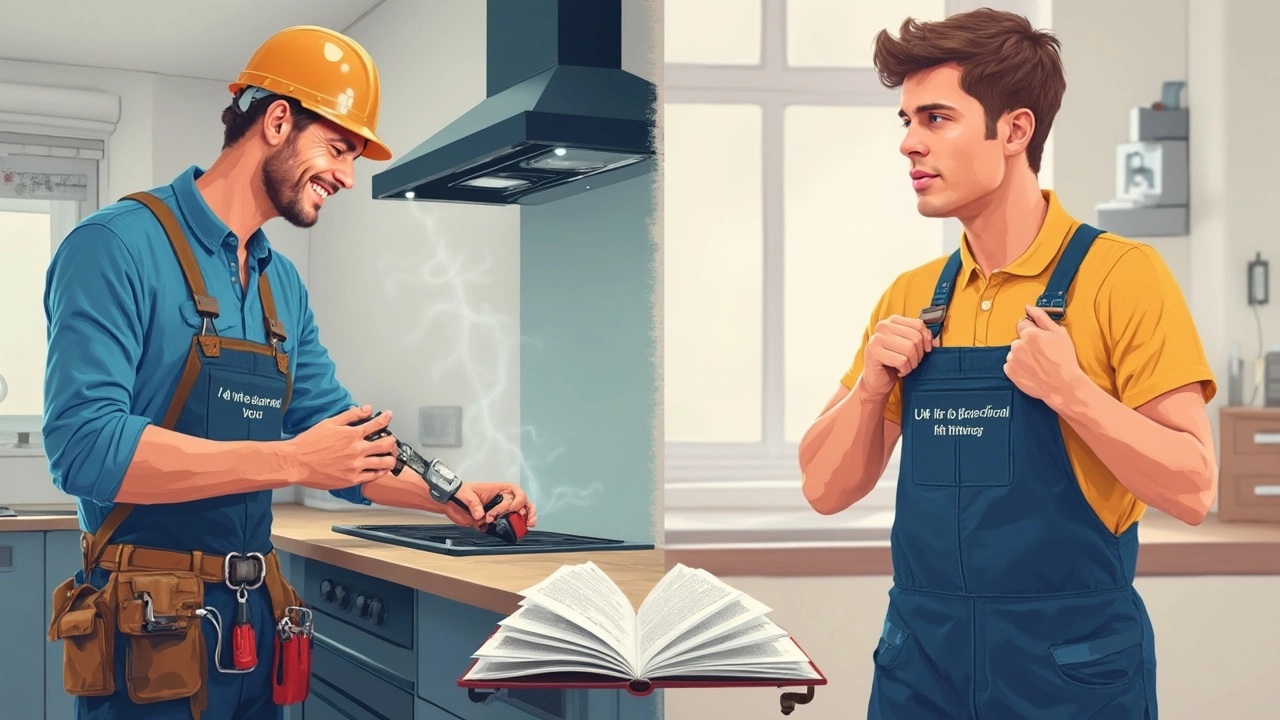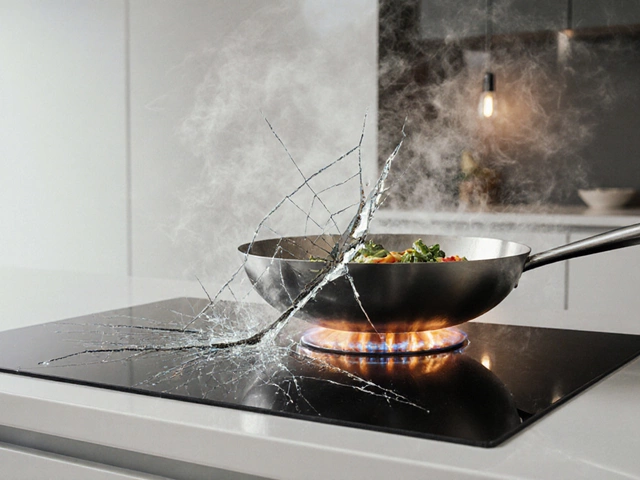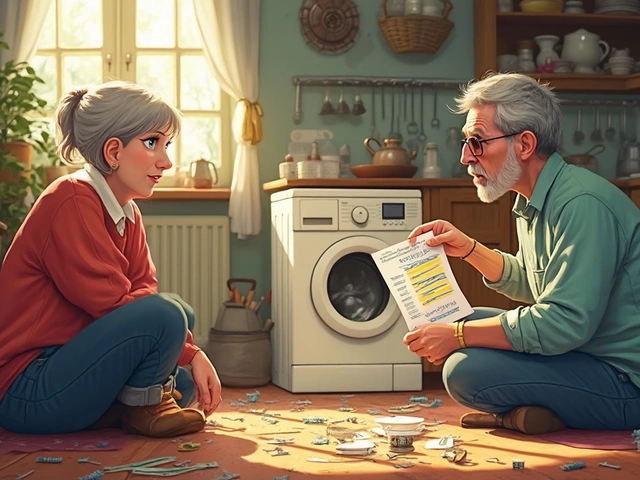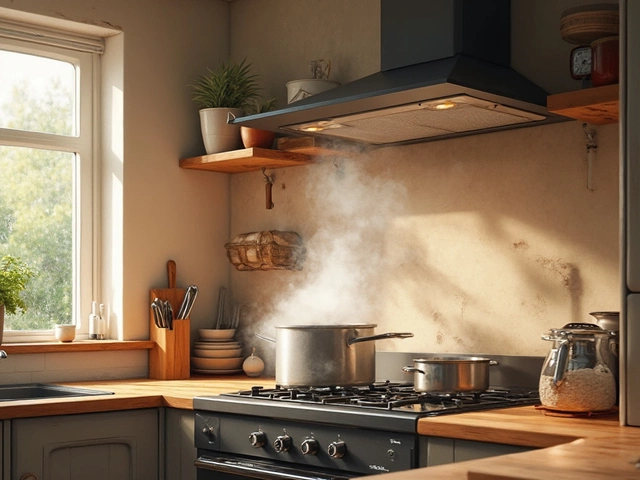Swapping out an electric hob might look simple at first glance—unscrew, unplug, pop in the new one, right? Not quite. Electric hobs are high-powered appliances, usually hardwired straight into your home’s circuit. That’s serious voltage, not meant for casual tinkering.
If you mess up the wiring or fail to shut off power correctly, you’re not just risking a blown fuse. You could cause a kitchen fire or an electric shock bad enough to land you in A&E. Even if nothing terrible happens right away, shoddy connections often lead to tripped breakers or the whole hob cutting out when you’re in the middle of dinner.
It’s tempting to save a bit on labour, but the job isn’t just about swapping wires around. There’s safety, building regulations, and sometimes even warranty issues to think about. The next sections break down what the law actually says, how a pro handles it, and what happens if you take shortcuts. No waffle—just straight, practical advice you’ll actually use.
- Why Electric Hobs Aren't Just Plug and Play
- Legal Stuff: What UK Regulations Really Say
- The Risks of DIY Hob Replacement
- How a Professional Handles the Job
- When (and How) to Tackle a Hob Swap Yourself
- Tips to Keep Your Kitchen Safe and Up to Code
Why Electric Hobs Aren't Just Plug and Play
Picture this: you buy a shiny new hob, take it out of the box, and look for a socket. But most modern electric hobs aren’t made to plug in the way your toaster or kettle does. Instead, they’re wired right into your home’s electrical supply. That’s because these things pull a lot of power—way more than a simple plug could handle safely.
Your typical electric hob runs at least 6kW, which is enough to trip regular sockets or even melt wires if the connections aren’t beefy enough. That’s why UK standards require hobs to be hooked up on what's called a ‘dedicated circuit.’ It’s connected straight to your fuse box (also known as the consumer unit), and has its own breaker for safety.
| Hob Power Rating | Recommended Circuit Breaker | Wiring Size |
|---|---|---|
| Up to 3 kW | 13A | 2.5mm2 |
| 3-6 kW | 32A | 6mm2 |
| 6+ kW | 40A or higher | 10mm2 |
If you get the wrong wiring, your breaker might not trip when it should. Or worse, it could trip all the time, making your life a headache. Ever seen burned wires or melted insulation in an old appliance? Usually, that’s because someone made a shortcut on the wiring. Not good news if it’s hidden behind your kitchen units.
And don’t forget—hob wiring colours changed around 2004 in the UK. If your home was wired before then and you’re not sure what’s what, it’s easy to mix up live and neutral by accident. That can fry your new appliance or make it dangerous to touch.
Bottom line: A electric hob isn’t just an oversized appliance. It’s a high power, permanent fixture, and there’s a load of hidden stuff that can go wrong. That’s why swapping a hob is more than a plug-in job—it’s about making your kitchen safe for the long haul.
Legal Stuff: What UK Regulations Really Say
In the UK, replacing an electric hob isn’t something you can just tackle on a whim—there are legal rules to follow. The big ones you need to know about are the Building Regulations Part P and the IET Wiring Regulations (BS 7671). These set out the safety standards for electrical work in homes, and they’re there to stop accidents and keep everyone safe.
If you’re swapping like for like (just replacing an old hob with a new one in exactly the same spot with the same wiring), you don’t absolutely have to use a registered electrician by law. But here’s the kicker: for all electrical work in kitchens—which are considered 'special locations'—Building Regulations say the work has to be done to a safe standard and notified to your local council if it’s anything beyond simple changes.
Check out the differences:
| Type of Work | Can you DIY? | Notification Needed? |
|---|---|---|
| Plug-in hob or cooker replacement | Yes | No |
| Hardwired hob replacement (same location) | Yes (strongly recommended to use a pro) | No |
| New electrical circuit for hob | No (must use a certified electrician) | Yes |
| Changes to wiring or circuit | No (must use a certified electrician) | Yes |
Here's the catch: If you mess up the installation—even if it's just a straight swap—and someone gets injured or there’s a fire, your home insurance could be void. Plus, when selling your house, any dodgy DIY electrical work can hold up the sale or lead to expensive fixes later.
In a nutshell: while UK law doesn’t totally ban DIY for like-for-like swaps, it expects you to know what you’re doing, guarantees nothing if it goes wrong, and wants you to call a pro if you’re even a little bit uncertain. For any bigger jobs—running new wires, changing circuits, or fitting in a different spot—the law is totally clear: hands off unless you’re properly qualified and certified.
The Risks of DIY Hob Replacement
Let’s not sugarcoat it—messing with wiring for an electric hob comes with real risks. For starters, electric hobs draw a lot of power, much more than your average kettle or toaster. If you get the wiring wrong, you're rolling the dice with fire hazards and electric shocks. Neither is a good way to spend your weekend.
A big risk is not isolating the power supply. One slip-up and you can get hit with 240 volts—enough to cause serious injury or worse. There’s also the fire risk: poorly connected terminals or loose wires heat up and can start smouldering inside your kitchen cabinets, sometimes undetected until it’s too late. Insurance claims may get rejected if the install wasn’t done by a certified electrician.
- You could damage your new hob before you even cook anything. Most manufacturers state that faulty installation voids the warranty.
- Accidentally connecting wires to the wrong terminals may trip your circuit breaker or fry your home’s electrics. These repairs often cost more than just getting a pro in the first place.
- Electrical work in kitchens falls under Part P of the UK Building Regulations, which means certain jobs must be signed off by a pro. If you don’t follow the rules, you risk fines or problems when selling your home.
Check out this table showing the top risks and their consequences:
| Risk | Potential Consequence |
|---|---|
| Power left on | Electric shock |
| Loose connections | Fire hazard |
| Wrong wiring | Tripped breaker, damaged hob, house electrics ruined |
| No compliance with regs | Insurance issues, fine, resale problems |
Statistically speaking, over 50% of UK house fires with an electrical cause involve kitchen appliances. Lots of these start because of bad wiring.
If you’re not trained, it’s easy to overlook things the pros watch for every day, like the right cable rating, proper circuit breaker size, and safe earth continuity. The bottom line: the DIY approach might sound cheap and quick, but even a tiny mistake can have big, expensive consequences down the road.

How a Professional Handles the Job
When a certified electrician steps in to replace an electric hob, they take care of everything from safety checks to final testing. They’re not just playing it safe—they’re making sure your appliance works without a hitch and meets all the legal stuff you probably haven’t thought about.
Here’s how an electrician typically does the job:
- Power Off: They’ll isolate the supply at your consumer unit (the fuse box) before even touching the hob. No risks, no shortcuts.
- Safe Removal: The old hob is tested to confirm the power’s really off, then they disconnect the wiring. No yanking wires or crossing fingers.
- Electrical Checks: An electrician will look for signs of damaged wires or overheating. If they spot anything dodgy, they’ll fix it on the spot.
- Wiring New Hob: They’ll make sure the new hob matches your supply load (usually 32 amp circuits in UK homes) and set up the wiring exactly according to manufacturer instructions. Wrong connections here can melt wires or trip the RCD.
- Testing: Once the hob’s in, they use a multimeter and insulation testers to check for earth continuity, proper polarity, and insulation resistance. This step is what most DIYers skip.
- Paperwork: In England and Wales, they’ll issue a Minor Electrical Installation Works Certificate—proof the work was done right. Good luck getting warranty support without it!
Here’s a quick look at what a pro typically does versus a DIYer:
| Step | Electrician | DIYer |
|---|---|---|
| Power Isolation | 100% always | Sometimes skipped |
| Compliance with Regulations | Always | Rarely checked |
| Testing Electrical Safety | With pro tools | Mainly guessing |
| Issuing Certificate | Yes | No |
One more fact: in a 2023 UK survey, 8 out of 10 home insurance companies said DIY electrical work could void your cover if there’s a fire. That’s part of why electricians are so thorough—nobody wants their kitchen or insurance on the line.
When (and How) to Tackle a Hob Swap Yourself
If you’re the hands-on type who likes getting stuck in, you might wonder when it’s actually safe (and legal) to swap an electric hob yourself. The short answer: sometimes, but not always. Here’s what you really need to know before you touch anything.
According to UK law, minor electrical work in your own kitchen—like swapping an old hob for a new one on the exact same connection—is usually allowed, as long as you’re not altering wiring or the circuit itself. Anything beyond unplugging and replugging (for hardwired hobs, that means dealing with junction boxes or terminals) is best left to a certified electrician.
Here’s when you can go DIY without trouble:
- The existing wiring, isolator switch, and circuit breaker are up to date and undamaged.
- The new hob has the exact same power rating (kW) and fits the same electrical setup as the old one.
- You feel confident checking and shutting off the correct fuse or breaker at your consumer unit.
- You aren't doing any new wiring or upgrades—just swapping like for like.
But statistics show that nearly 40% of UK home injuries from electricity happen during DIY jobs. Still want to go for it? Follow these extra-safe steps:
- Turn off the power at the main consumer unit. Double-check with a voltage tester before touching anything.
- Remove the old hob, taking note of how the wires are connected (snap a photo for reference).
- Check wiring for any obvious damage or heat marks. If you spot any, stop and call a pro right away.
- Install the new hob wire-for-wire, matching neutral, live, and earth wires to the correct terminals.
- Confirm everything is secure, then restore power and test the hob functions.
| Tools You'll Need | Purpose |
|---|---|
| Voltage tester | Check power is off and safe |
| Screwdriver set | Remove/secure terminals & fixings |
| Wire strippers | Neaten wires if needed |
| Phone/Camera | Take reference photos |
One last tip: if your hob doesn’t power up right away, or your home’s RCD keeps tripping, call an electrician. That’s not a sign to try more trial and error—get it checked before you do more damage.
If you’ve got even a shred of doubt, or the existing set-up isn’t a perfect match for your new hob, sorting it professionally is way cheaper than recovery from a shock or electrical fire. When you’re ready, remember: swapping a electric hob is sometimes a DIY job, but it’s never worth risking your safety to save a few quid.
Tips to Keep Your Kitchen Safe and Up to Code
Safety and legal compliance go hand in hand when you’re dealing with electric hob replacement. Mistakes aren’t just annoying—they could get you fined, void insurance, or even cause a serious accident. Here’s how to make sure you get it right first time.
- Turn off the power at the mains. Don’t just flip the kitchen socket. Find the right circuit breaker and double-check with a voltage tester. It’s shocking (literally) how many people skip this basic step.
- Always check the rating. Your new hob’s power rating must match the existing circuit. Modern hobs can pull a lot more current than older ones, so if your wiring is decades old, you might need an upgrade. If in doubt, check the manual or ask a pro.
- Stick to UK wiring colours. Since 2006, the UK uses brown (live), blue (neutral), and green/yellow (earth). Messing this up isn’t just illegal; it’s dangerous. If you see old colours (like red or black), connection diagrams online can help, but it’s safer to call an electrician.
- Don’t bodge the isolator switch. Every electric hob installed in the UK needs a proper isolator switch, usually positioned within two metres of the hob but not directly above. If yours is missing or looks dodgy, you need to sort this out for safety.
- After fitting, test everything carefully. Once wired in, turn the power back on and check each hob ring. Make sure nothing trips and there’s no funny smell or buzzing. A cheap socket tester doesn’t cut it for hobs—you want a true electrical test, which is why many leave it to the pros.
If you’re ever unsure, don’t wing it. The safest and simplest way to stay legal and protect your home is to bring in a certified electrician—especially for anything that involves new wiring or big current loads. No one wants to risk their kitchen just to save a few pounds.







